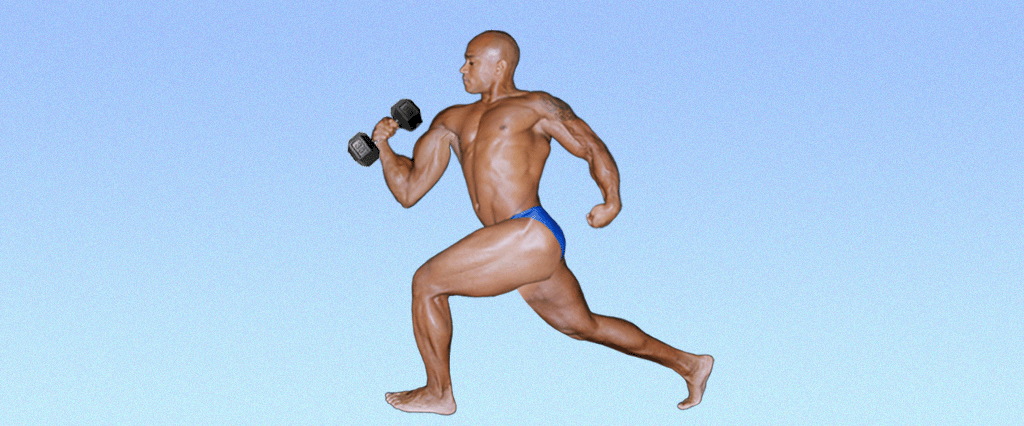A foremost benefit to learning to lift weights on the rusty machines inside of my high school gym was that there was almost no penalty for training with lousy form. For example, on a shoulder press machine, the fixed path of the weight, coupled with its set starting position, guarantees that there is no risk of a weight being dropped on the floor, or of the bar straying from its predetermined path. This makes it very easy to rapidly elevate the weight, and then haphazardly drop it until the bar reaches its starting point and the stacked plates slam together — all of which transpires without a hint of resistance being employed to slow the bar’s descent or otherwise control it in any way, shape or form.
If the goal is to maximize overall strength, this is the wrong way to go about it, even if it will successfully attract the greatest number of eyeballs for no other reason than the amount of noise you’re making from all that plate slamming.
How fast is the weight supposed to move during resistance training?
There is no one way to train correctly depending on your goals, so the speed with which you should move weight can depend on what you’re ultimately trying to accomplish. That said, the phases of a lift have profound implications on how quickly you can gain muscle size, strength and endurance.
The two primary phases of a lift are its concentric phase and its eccentric phase, broken up briefly by an isometric phase. The concentric phase involves the shortening and contraction of the primary muscle movers of an exercise, whereas the eccentric phase naturally involves the lengthening of those same muscles. During a bicep curl, the lifting segment that shortens, squeezes and essentially flexes the bicep is the concentric phase, while the return of the weight to its starting position is the eccentric phase. If you pause, flex and stabilize the weight at the peak of the movement, this causes a contraction in the isometric phase.
Believe it or not, most studies that compare the differences and benefits between concentric and eccentric muscle contractions have concluded that more muscle-building actually takes place during the muscle-lengthening phase than during the shortening phase. While other research has arrived at the opposite conclusion, what seems to have been established through the totality of the evidence is that the muscle-fiber damage and corresponding muscle growth caused during the different phases is itself somewhat different. And so, incorporating both forms into your training is essential for developing strength in the most complete sense of the term.
Great! So how do I do that?
For starters, the eccentric phase of the lift should be at least as long as the concentric phase, if not longer. Since the length recommendation for the concentric phase is usually at least two seconds, most suggestions for the eccentric phase are in the realm of three to five seconds. So the total length of each rep should probably be around five to six seconds — a two-second concentric phase, a one-second isometric pause and a two- to three-second eccentric phase.
Is this a hard-and-fast rule?
Not at all, because there are several different forms of strength training. For instance, training for power requires explosive movements where the weight is rocketed into its peak position as swiftly, aggressively, and sometimes, as recklessly as possible. Consequently, there is often no concentric or isometric phase to these lifts, and you never have to ask how fast the weight should move. The answer is very clear: As fast as possible.
That said, you can’t ever go wrong with maintaining dedicated concentric, isometric and eccentric phases. It’s a healthy, time-tested way to train that will result in your muscles appreciating you, your fellow gym goers not being annoyed with your constant weight-plate clamor and the gym maintenance crew appreciative of no longer having to fix all of the cracked Smith Machine stop pads you’ve left in your wake.

